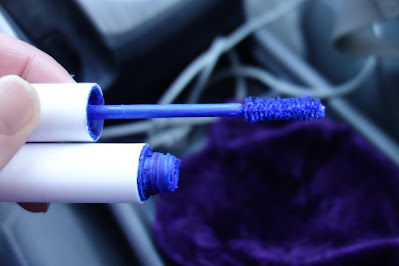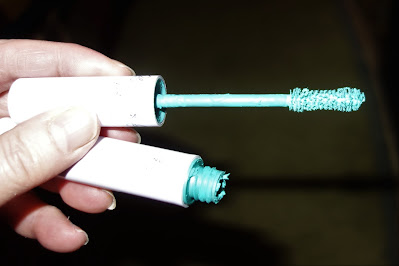A few years ago, I had written a post entitled, "The Color of Moods" in which I talked about a seminar I attended that was facilitated by a registered nurse on how colors affect our emotions. This post is intended to serve as a more scientific view on the subject.
Have you ever noticed that certain colors tend to induce or bring about specific emotions when looking at them? For example, does the color light blue make you feel calm or peaceful? Does the color red make you feel passionate - or perhaps even a little more aggressive? Have you ever noticed that mental hospitals tend to use the color yellow on their walls?
While doing some further research on the subject, I learned a few very interesting things. For one, not only do certain colors evoke specific emotional responses regarding our brain patterns, but scientific studies have found that there are three ways in which colors effect us:
1) Psychologically: This effect is based on our personal experiences.
2) Symbolically: Such colors can be associated with a specific object. For example, the color "sky-blue," "sea-green," "candy-apple red," and so on.
3) Culturally: The color white, for example, is usually associated with pureness and innocence in western society, but in eastern culture it is the color for death and sadness.
How exactly can colors manipulate our feelings and emotions? Well, according to a study by Wellesley College researchers Stoughton and Bevil Conway, it is possible that our brains are hard-wired to like or dislike certain colors and it all relates to emotional responses when we see color. Advertisers are well aware of this fact and use this information to their advantage when promoting and selling their products. As stated by Conway, the research study has significant implications for the creative community "to the extent that anyone would find it informative to know how the nervous system works, and through that would gain an appreciation for these phenomena, I would think artists and designers could benefit."
(For more information on colors, please click on the links at the bottom)
While the science behind our emotional connections to color is a complicated one, it is becoming more clear through anecdotal knowledge and scientific experimentation.
Science Behind Color and Emotion
(References: "Science Behind Color and Emotion" and "How Colors Manipulate Your Emotions")
Have you ever noticed that certain colors tend to induce or bring about specific emotions when looking at them? For example, does the color light blue make you feel calm or peaceful? Does the color red make you feel passionate - or perhaps even a little more aggressive? Have you ever noticed that mental hospitals tend to use the color yellow on their walls?
While doing some further research on the subject, I learned a few very interesting things. For one, not only do certain colors evoke specific emotional responses regarding our brain patterns, but scientific studies have found that there are three ways in which colors effect us:
1) Psychologically: This effect is based on our personal experiences.
2) Symbolically: Such colors can be associated with a specific object. For example, the color "sky-blue," "sea-green," "candy-apple red," and so on.
3) Culturally: The color white, for example, is usually associated with pureness and innocence in western society, but in eastern culture it is the color for death and sadness.
How exactly can colors manipulate our feelings and emotions? Well, according to a study by Wellesley College researchers Stoughton and Bevil Conway, it is possible that our brains are hard-wired to like or dislike certain colors and it all relates to emotional responses when we see color. Advertisers are well aware of this fact and use this information to their advantage when promoting and selling their products. As stated by Conway, the research study has significant implications for the creative community "to the extent that anyone would find it informative to know how the nervous system works, and through that would gain an appreciation for these phenomena, I would think artists and designers could benefit."
(For more information on colors, please click on the links at the bottom)
While the science behind our emotional connections to color is a complicated one, it is becoming more clear through anecdotal knowledge and scientific experimentation.
Science Behind Color and Emotion
(References: "Science Behind Color and Emotion" and "How Colors Manipulate Your Emotions")
💙💚💛💜💙💚💚💛💜💙💚💛💜💙💚💛💜
Speaking of colors, I have always been fascinated by "eyes" ever since I was a child. I used to (and still do) love to draw, most especially, eyes. As an adult, I love to use color mascara when playing/experimenting with make-up.
I recently found this beautiful, vibrant "Teayason Mascara" set on line. Love the cat design, too! This set was only $22.23!
One of my fav's are the Colour Pop line of mascara's ...
And, a bit more expensive brands are also available such as Urban Decay's "Double Team" line of mascara ...
So much fun!!

















Interesting article. I don't wear make-up beyond a little blush and lipstick so I never knew mascara came in any other colors except black
ReplyDeleteA very interesting article you've shared, thank-you.
ReplyDeleteAll the best Jan
This is such a fascinating and informative post! Colors definitely affect our moods and actually our entire lives. My favorite colors are blue and yellow - - but I really love the earth tones and especially all the colors of autumn.
ReplyDeleteThe kitty cat mascara is unique.....and colorfully creative!